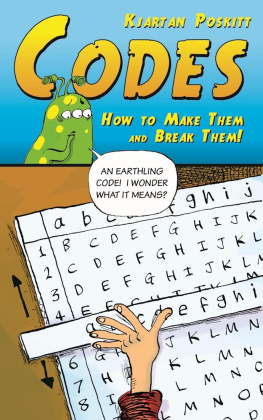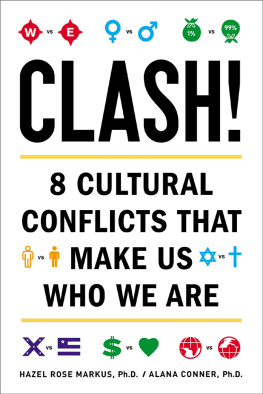Clotaire Rapaille - The Culture Code: An Ingenious Way to Understand Why People Around the World Live and Buy as They Do
Here you can read online Clotaire Rapaille - The Culture Code: An Ingenious Way to Understand Why People Around the World Live and Buy as They Do full text of the book (entire story) in english for free. Download pdf and epub, get meaning, cover and reviews about this ebook. City: New York, year: 2013, publisher: Crown Business, genre: Romance novel. Description of the work, (preface) as well as reviews are available. Best literature library LitArk.com created for fans of good reading and offers a wide selection of genres:
Romance novel
Science fiction
Adventure
Detective
Science
History
Home and family
Prose
Art
Politics
Computer
Non-fiction
Religion
Business
Children
Humor
Choose a favorite category and find really read worthwhile books. Enjoy immersion in the world of imagination, feel the emotions of the characters or learn something new for yourself, make an fascinating discovery.
- Book:The Culture Code: An Ingenious Way to Understand Why People Around the World Live and Buy as They Do
- Author:
- Publisher:Crown Business
- Genre:
- Year:2013
- City:New York
- Rating:4 / 5
- Favourites:Add to favourites
- Your mark:
The Culture Code: An Ingenious Way to Understand Why People Around the World Live and Buy as They Do: summary, description and annotation
We offer to read an annotation, description, summary or preface (depends on what the author of the book "The Culture Code: An Ingenious Way to Understand Why People Around the World Live and Buy as They Do" wrote himself). If you haven't found the necessary information about the book — write in the comments, we will try to find it.
Abstract: Why are people around the world so very different What makes us live, buy, even love as we do The answers are in the codes. In The Culture Code, internationally revered cultural anthropologist and marketing expert Clotaire Rapaille reveals for the first time the techniques he has used to improve profitability and practices for dozens of Fortune 100 companies. His groundbreaking revelations shed light not just on business but on the way every human being acts and lives around the world. Rapailles breakthrough notion is that we acquire a silent system of codes as we grow up within our culture. These codesthe Culture Codeare what make us American, or German, or French, and they invisibly shape how we behave in our personal lives, even when we are completely unaware of our motives. Whats more, we can learn to crack the codes that guide our actions and achieve new understanding of why we do the things we do. Rapaille has used the Culture Code to help Chrysler build the PT Cruiserthe most successful American car launch in recent memory. He has used it to help Procter & Gamble design its advertising campaign for Folgers coffee one of the longest lasting and most successful campaigns in the annals of advertising. He has used it to help companies as diverse as GE, AT & T, Boeing, Honda, Kellogg, and LOrEal improve their bottom line at home and overseas. And now, in The Culture Code, he uses it to reveal why Americans act distinctly like Americans, and what makes us different from the world around us. In The Culture Code, Dr. Rapaille decodes two dozen of our most fundamental archetypesranging from sex to money to health to America itselfto give us a new set of glasses with which to view our actions and motivations. Why are we so often disillusioned by love Why is fat a solution rather than a problem Why do we reject the notion of perfection Why is fast food in our lives to stay The answers are in the Codes. Understanding the Codes gives us unprecedented freedom over our lives. It lets us do business in dramatically new ways. And it finally explains why people around the world really are different, and reveals the hidden clues to understanding us all
Clotaire Rapaille: author's other books
Who wrote The Culture Code: An Ingenious Way to Understand Why People Around the World Live and Buy as They Do? Find out the surname, the name of the author of the book and a list of all author's works by series.









